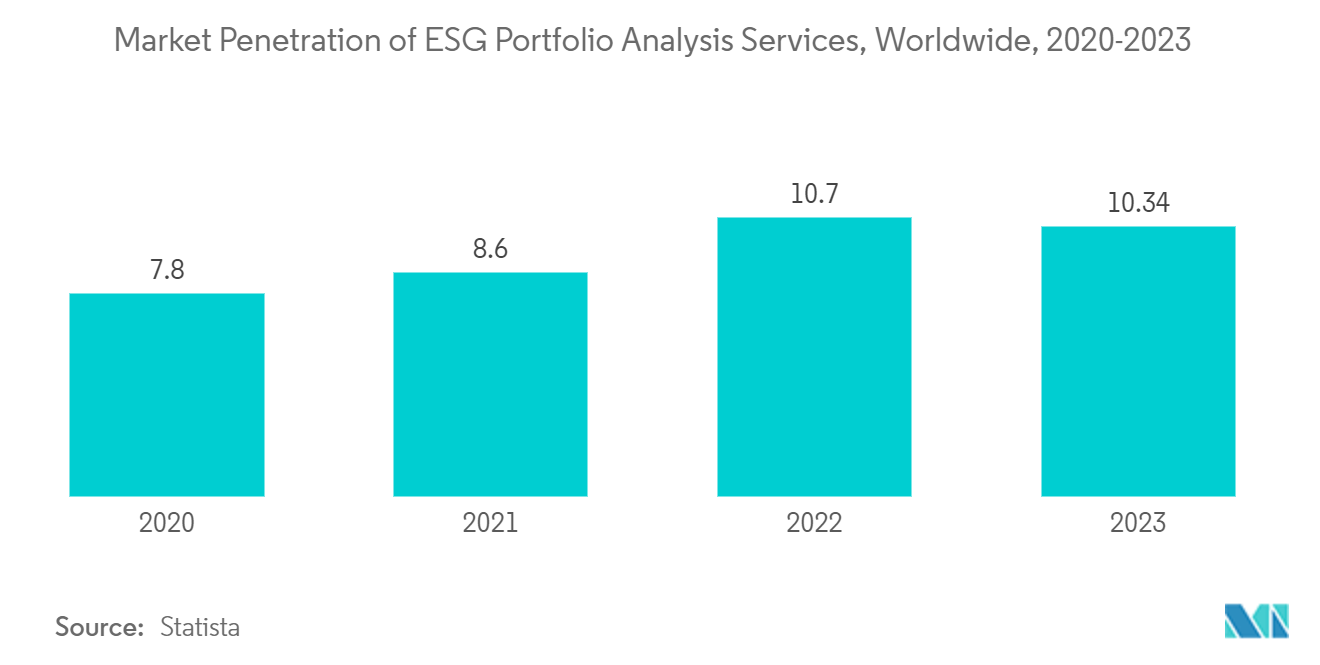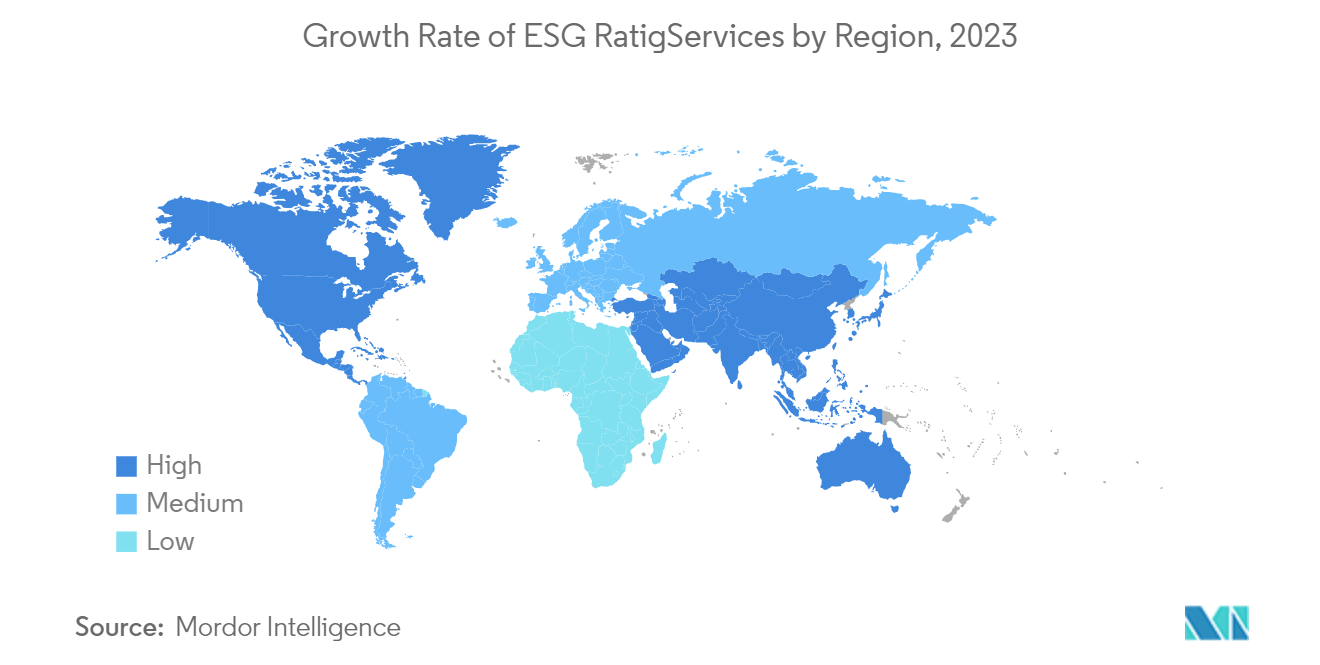Market Trends of ESG Rating Services Industry
The Growing Number of Technological Advancements is Driving the Market
The rising number of investments is leading to increased sustainability and quality standards by policymakers, investors, and other key stakeholders. Ethical business practice in a holistic manner is highly demanded by investors. The ESG standards determine or evaluate the company’s performance, while sustainability encompasses responsible business practices. Various businesses seek to align their portfolios with sustainable and responsible practices, considering the potential risks and opportunities for the business associated with environmental and social issues. Technological developments and advancements that allow businesses to address social and environmental concerns are driving ESG's efforts to create a sustainable and inclusive economy. Demand for sustainable investing solutions is driving an increasing integration of ESG ratings into investment procedures.
Technologies involved in renewable energy, energy efficiency, clean technology, and sustainable agriculture are fueling the market. These technologies play a crucial role in advancing ESG practices. They enable the efficient collection, storage, and analysis of large volumes of data related to the ESG factor.

North America is Expected to Dominate the Market owing to Climate and Energy Transitions
The North American market is growing, owing to the increasing focus on climate change mitigation and renewable energy transition, the presence of large institutional investors with ESG mandates, and the growing demand for sustainable investing options driving the market in the region. North America is expected to contribute 41% to the growth of the global market.
The United States is the largest market in North America due to the large-scale implementation of environmental, sustainability, and governance (ESG) reporting software to minimize environmental hazards. ESG reporting software has been mandated by numerous industries, including materials, chemicals, energy, and utilities (E&U), and regulatory bodies like the Occupational Safety and Health Administration (OSHA), which promote worker safety rules. As a result, occupational risks were reduced. There are several technological advancements to guide compliance with regulations and acts, such as the Clean Air Act in the United States. These have reduced industrial emissions and promoted the adoption of sustainability management and environmental, sustainability, and governance (ESG) reporting software.


